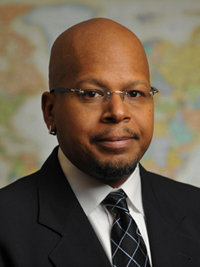
Every year, millions of government-supported human rights violations — torture, political arrests, disappearances, censorship, harassment, aggressive protest policing — go unreported, making it impossible to understand fully or address state repression around the world. Victims and those close to them often are voiceless, having no way to document safely what they have experienced or seen. Perpetrators themselves are unlikely to provide information, so scholars and human rights advocates have little to go on except partial or sometimes biased second-hand accounts.
A new Web-based database and research tool, developed by Christian Davenport, professor of peace studies, political science, and sociology at the University of Notre Dame’s Kroc Institute for International Peace Studies, will expand dramatically what academic researchers, international human rights advocates, journalists, students and the public know about government repression. The Illustrative Information Interface (iii) will allow anyone with Internet access to register his or her view of the scope and severity of government abuse for a particular geographic area from 1900 to the present.
“With this Web site, anyone can be a human rights monitor,” says Davenport. “When someone experiences or observes a situation of abuse, they could ‘iii’ it directly into the database. Eventually, we’ll move to texting and emailing as well.”
The site is already open for anyone to enter data. To accelerate the data compilation process, Notre Dame Ph.D. students in political science, armed with iPads, will conduct interviews and enter data from “anchors” — scholars, journalists, legal experts and human rights activists in Central and South America. The project eventually will include data from all over the world, including refugee camps and isolated rural areas.
Once a significant amount of historic and current data is aggregated — or crowdsourced — researchers will be able to see the magnitude of the problem and trends over time and space, Davenport said. Also, users can sort (by gender, religion, ethnic group, type of abuse, etc.) and analyze the data to inform human rights work, shape interventions to prevent war or genocide, and encourage study and practice of truth-telling, reconciliation and healing.
The idea for the project began when Davenport was in Tanzania talking to a young man about the abuses the man had experienced at the hand of the government in a nearby country. To illustrate the ebb and flow of repression in his region, the man drew a simple chart on a napkin, showing severity of abuse on one axis and time on the other.
“With that simple gesture, it occurred to me that nearly everyone who has been a victim or an observer to abuses had a good sense of whether things were better or worse over time,” said Davenport, who received a grant for the project from Notre Dame’s Faculty Research Support Program. “You don’t have to be an expert or highly educated to report abuse, and if many people did so, the data would show patterns that would be extremely useful.”
To develop iii, Davenport worked with Notre Dame’s Center for Research Computing, which creates high-powered digital research tools for faculty in the natural sciences, engineering, arts and humanities, and social sciences.
Contact: Christian Davenport, 574-631-0361, cdavenp1@nd.edu